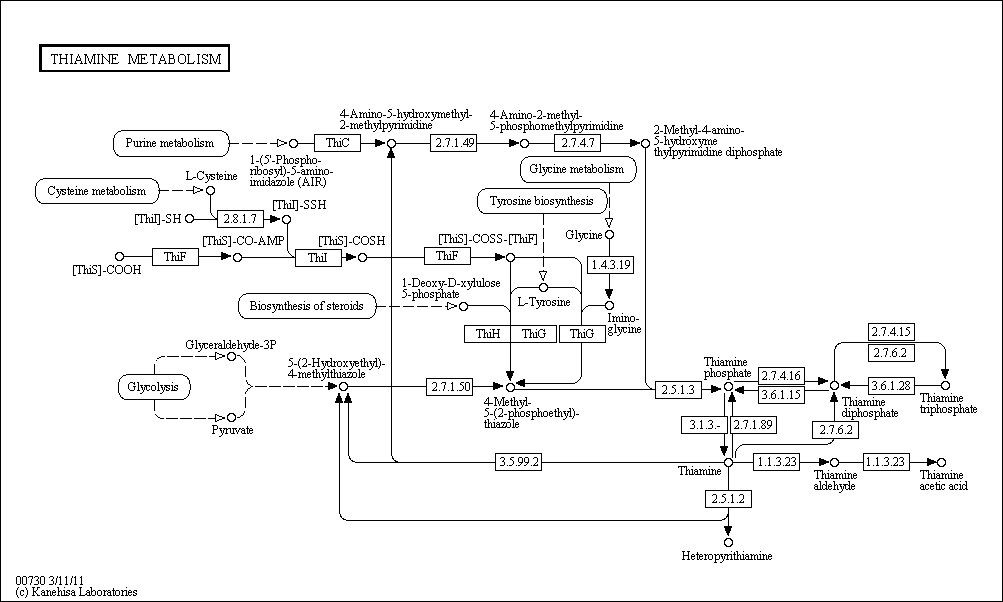Thiamine Metabolism
Description: Thiamin(e), also known as vitamin B1, is known to play a fundamental role in energy metabolism. It consists of a pyrimidine ring (2,5-dimethyl-6-aminopyrimidine) and a thiazolium ring (4-methyl-5-hydroxy ethyl thiazole) joined by a methylene bridge. Thiamine is found in a wide variety of foods at low concentrations. Yeast and pork are the most highly concentrated sources of thiamine. Cereal grains, however, are generally the most important dietary sources of thiamine, by virtue of their ubiquity. Of these, whole grains contain more thiamine than refined grains. Thiamine is released by the action of phosphatase and pyrophosphatase in the upper small intestine. At low concentrations the process is carrier mediated and at higher concentrations, absorption occurs via passive diffusion. Active transport is greatest in the jejunum and ileum (it is inhibited by alcohol consumption and by folic deficiency). The majority of thiamine in serum is bound to proteins, mainly albumin. Uptake of thiamine by cells of the blood and other tissues occurs via active transport and passive diffusion. About 80% of intracellular thiamine is phosphorylated and most is bound to proteins. Thiamine and its acid metabolites (2-methyl-4-amino-5-pyrimidine carboxylic acid, 4-methyl-thiazole- 5-acetic acid and thiamine acetic acid) are excreted principally in the urine. Thiamine is the main transport form of the vitamin, while the active forms are phosphorylated thiamine derivatives. There are four known natural thiamine phosphate derivatives: thiamine monophosphate (ThMP), thiamine diphosphate (ThDP), also sometimes called thiamine pyrophosphate (TPP), thiamine triphosphate (ThTP), and the recently discovered adenosine thiamine triphosphate (AThTP) and adenosine thiamine diphosphate (AThDP). Thiamine monophosphate (TMP) is an intermediate to facilitate the synthesis of free thiamine to thiamine diphosphate and triphosphate. The synthesis of thiamine diphosphate (ThDP), also known as thiamine pyrophosphate (TPP) or cocarboxylase, is catalyzed by an enzyme called thiamine diphosphokinase. TPP activates decarboxylation of pyruvate in the pyruvate dehydrogenase complex. This complex is a group of enzymes and cofactors that form acetyl CoA that condenses with oxaloacetate to form citrate, the first component of the citric acid cycle. Source: Pathman

Related BMRB Molecules
For complete information about pathway, see KEGG [map00730]
